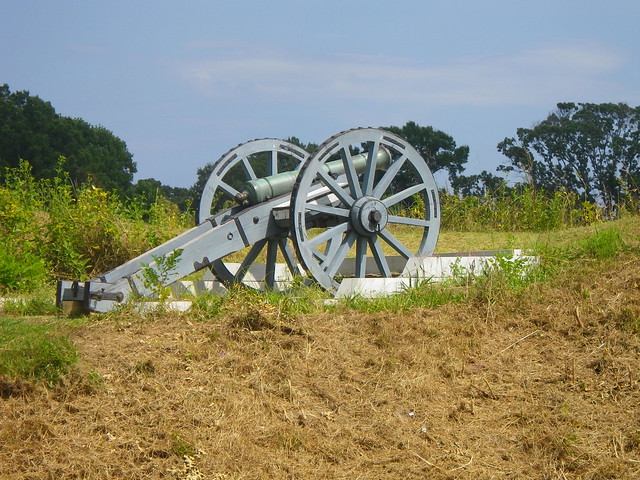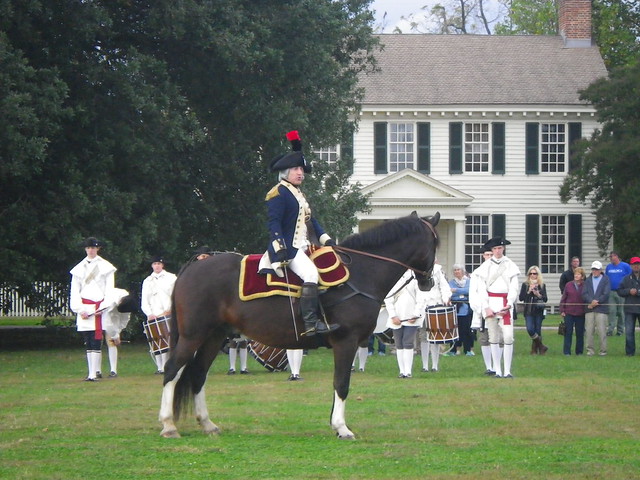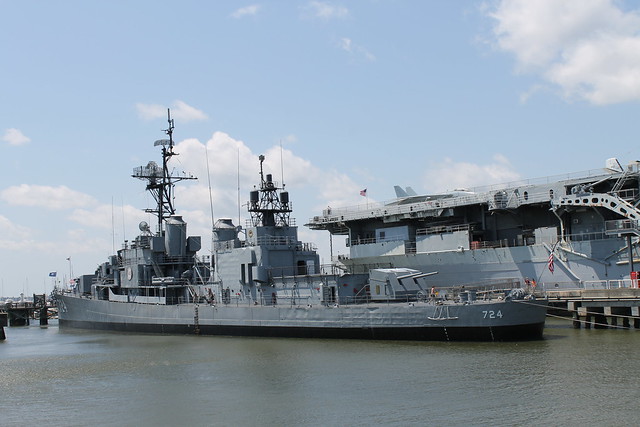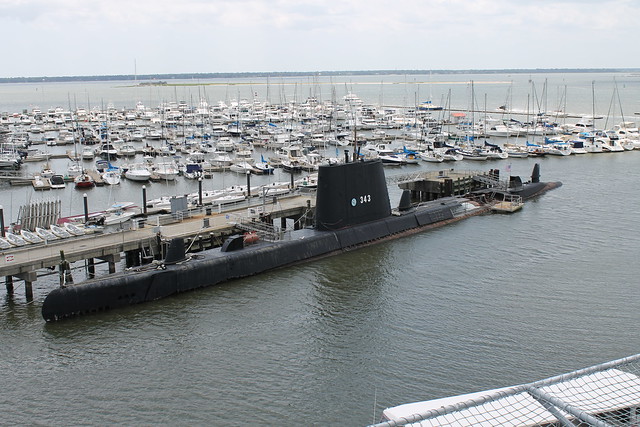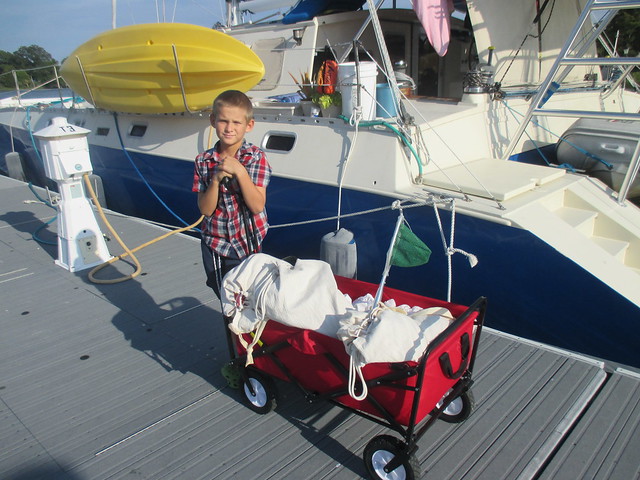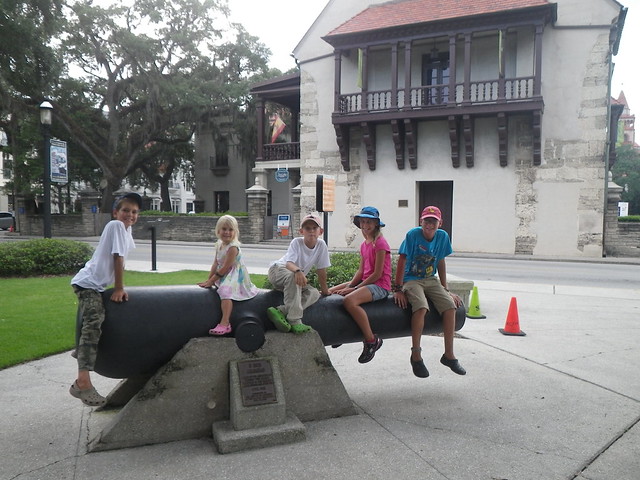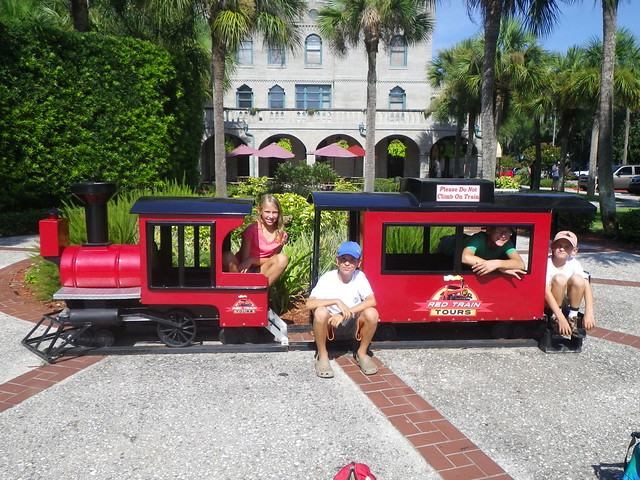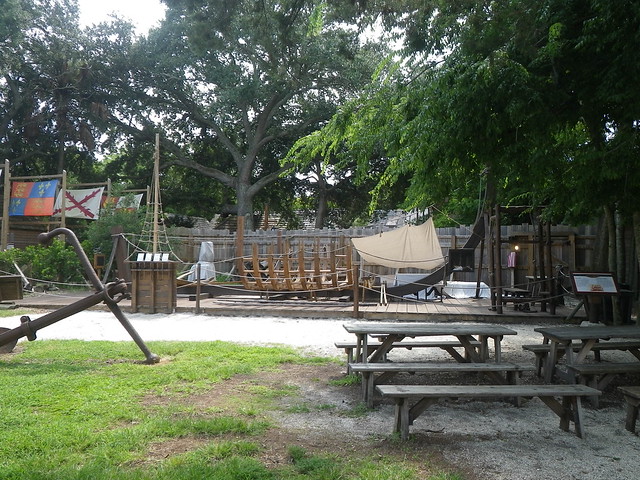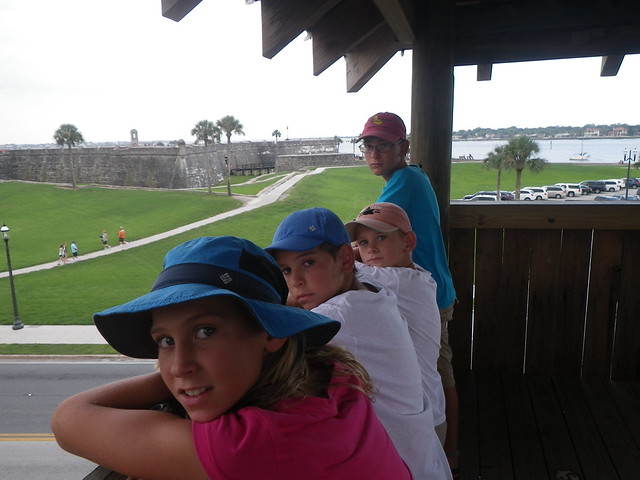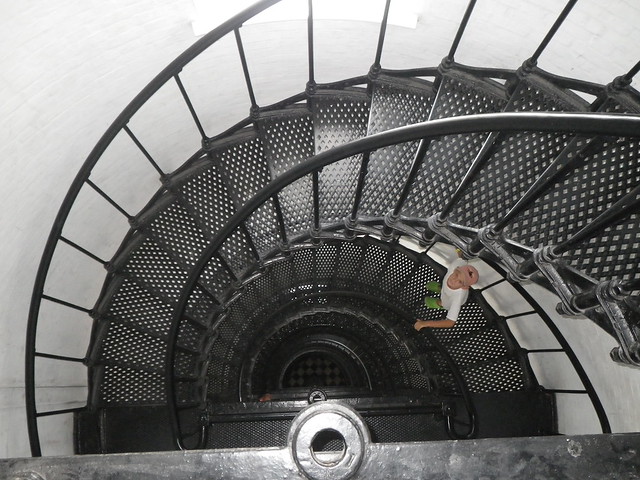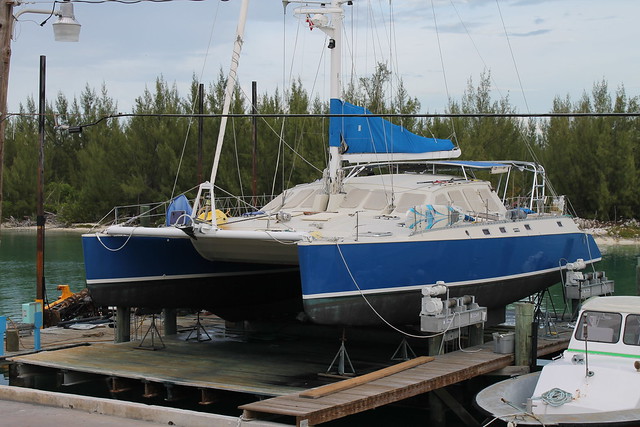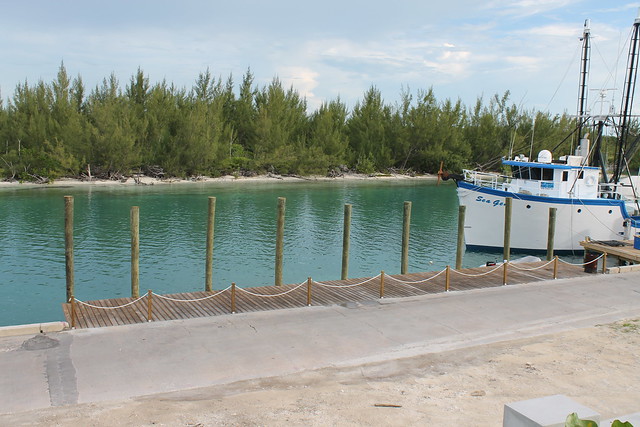No trip into the Chesapeake would be complete without a stop in the York River. Easily accessible and picturesque, Yorktown is a perfect place to start a history field trip. We did a 2½-day passage from Charleston and stayed a few days at the York River Yacht Haven, directly across the river from historic Yorktown. The marina has a good restaurant, swimming pool and very nice ship’s store, and is only a ten-minute dinghy ride away from Riverwalk Landing where you can dock your dinghy for $5/day and either walk around town or ride the free shuttle to see the sights.
Yorktown is one corner of the so-called “Historic Triangle,” connected by the beautiful Colonial Parkway to Colonial Williamsburg and the historic Jamestown Settlement. There are so many things to see and do in this area that it would be easy to get sucked into the triangle—we spent a few days in Yorktown alone, then rented a car to take the children to Jamestown Settlement (not to be confused with the National Park, Historic Jamestowne, that sits on the actual site of the 1609 settlement). We went to Colonial Williamsburg later, at the tail end of our trip, while waiting in Hampton, Virginia for good traveling weather. One recommendation I would make for visitors headed this way: figure out what you’d like to do ahead of time and buy combination tickets.
In Yorktown, there are three must-see stops: the Yorktown Victory Center, a museum and living history park, Historic Main Street, capped at its eastern end by the eye-catching Yorktown Victory Monument, and the Yorktown Battlefield (a National Park and the scene of the pivotal battle in the Revolutionary War). There was something very special about seeing Revolutionary War cannons in place on fortifications that were built so long ago. We had lunch one day on the waterfront at “The Carrot Tree,” a local favorite, and walked across the street to the Ben & Jerry’s for cool treats.
Jamestown Settlement has changed a bit since I was there as a kid. The outdoor sites, the Indian Village, Fort and three historic ships at the Riverfront are just as I remembered them, peopled with guides in period-dress who answer questions and explain life as it once was. But the new indoor museum exhibits almost dwarf the exterior living history ones. The enormous, air-conditioned building tells the whole story of Jamestown, from its days as a private business venture to its role in the American Revolution, with more artifacts and information than one could take in in a single perusal. I was very happy we took the extra day and rented a car—the kids got a chance to see, in a sense, where the whole American story began.
By the time we visited Colonial Williamsburg, the kids had ceased to be amazed by living history museums and hundreds-of-years-old buildings that had been preserved and restored. Too bad, really, because Williamsburg really is amazing, if only because of its size and scope. The town exists as it did on the eve of the Revolutionary War—period costumes, furniture, re-enactments, the whole bit. On the recommendation of a friend, we decided not to buy admission tickets and simply see what we could for free. We parked at the Visitor’s Center and watched a free film there on the Revolutionary War (very good) and got on the free shuttle bus which makes a circuit around Colonial Williamsburg and stops at important places where you can hop off/on. We walked around the 1774 town and peeked into windows and watched a demonstration of Revolutionary War cannons. We even got to hear a rousing speech given on horseback by the Marquis de Lafayette himself! Lunch, of course, is never free, but we found a great sandwich place (the Cheese Shop) and had a lovely picnic on some park benches. Given more time (and more enthusiastic traveling buddies), I would spend the money to go inside the historic buildings and the folk art museum, but with the time and energy we did have, I felt like we got a great idea about what life was like in the colonial era just by walking around Williamsburg.
Taken individually, each site has something valuable to offer, but as a trio, one gets a clear picture of how what started as a small band of English colonists became, over time and with much struggle, the United States of America. On that note, I might suggest an order for visiting the Triangle: start at Jamestown, then go to Williamsburg, and end in Yorktown. Plan to spend at least a day in each place, but be warned—you may start reading plaques and get lost in the Historic Triangle!

